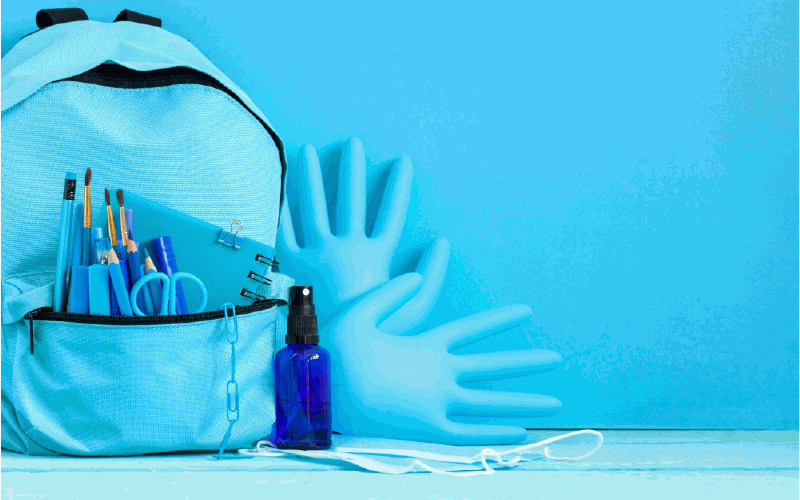A trip to the nail salon should leave you feeling pampered, polished, and safe. However, not all salons are created equal when it comes to cleanliness. Poor hygiene practices can lead to a range of issues, from minor skin irritations to serious infections like fungal conditions, warts, and even bloodborne diseases. That’s why it’s important for clients to be informed and vigilant about sanitation standards.
To help you stay safe during your next manicure or pedicure, here are the top 10 Blossom Nail Spa San Jose hygiene practices every client should know.
1. Sterilization of Tools
The gold standard for tool cleanliness is sterilization using an autoclave, which employs high-pressure steam to kill all bacteria, fungi, and viruses. Salons should use either autoclaves or hospital-grade disinfectants on tools like nail clippers, cuticle pushers, and nippers after every client.
⚠️ What to look for: Tools should come out of sealed, sterilized pouches or be disinfected in front of you. If they’re pulled from a drawer without any packaging, that’s a red flag.
2. Single-Use Items
Some tools, such as nail files, buffers, pumice stones, toe separators, and wooden cuticle sticks, are porous and cannot be fully sanitized. These should be discarded after a single use.
⚠️ What to look for: Make sure the technician uses new disposable items for you. Some salons let you keep your own kit for reuse, which is a great option if you’re a regular client.
3. Hand and Foot Sanitation
Before starting a service, nail technicians should wash their hands and ask you to do the same. For pedicures, clients’ feet should be soaked in clean, disinfected basins or liners.
⚠️ What to look for: Salons should provide antibacterial soap and visibly encourage hand-washing. If technicians skip this step, consider it a major warning sign.
4. Clean Workstations
Workstations should be clean, clutter-free, and regularly disinfected. Dust, polish spills, and used tissues can harbor bacteria and show poor overall sanitation habits.
⚠️ What to look for: A clean surface between clients is a must. If you see residue from a previous customer, speak up or reconsider staying.
5. Disinfection of Foot Baths and Spa Chairs
Foot spas are a common source of cross-contamination if not cleaned properly. Salons should disinfect foot baths between each client using EPA-registered disinfectants. Many high-end salons now use disposable liners in their pedicure tubs.
⚠️ What to look for: The technician should visibly clean and disinfect the basin or change the liner after every client. Ask how they clean their tubs if you’re unsure.
6. Proper Glove Use
While not mandatory, many professional technicians wear disposable gloves during services—especially if there’s a risk of skin contact with blood or other bodily fluids. Gloves also protect against nail infections and should be changed between clients.
⚠️ What to look for: Gloves should be clean, single-use, and changed after every client. Reusing gloves or touching unsanitary surfaces before your service is unhygienic.
7. Skin and Nail Health Assessment
Responsible technicians will refuse to work on clients with signs of infection (e.g., open wounds, fungal nails, or athlete’s foot) and should also avoid cutting live tissue, which increases infection risk.
⚠️ What to look for: Your technician should inspect your nails and feet before starting. If you have cuts or infections, they should recommend a medical consult, not proceed.
8. Proper Storage of Products and Tools
Sanitary salons store clean tools separately from dirty ones. Products like lotions, scrubs, and creams should be dispensed hygienically—ideally using pumps or disposable applicators—to prevent contamination.
⚠️ What to look for: Jars that are “double-dipped” with fingers or spatulas are breeding grounds for bacteria. Ensure products are handled cleanly.
9. Technician Licenses and Salon Inspections
Reputable salons display their technicians’ current licenses and pass routine health inspections. Licensing ensures that technicians are trained in hygiene, safety, and proper procedures.
⚠️ What to look for: Check for posted licenses and inspection grades from local health authorities. Don’t hesitate to ask if you’re unsure about their credentials.
10. Client Education and Consent
Professional salons take the time to educate clients about their procedures and seek consent for services. If a salon rushes through explanations or discourages questions, they may be hiding improper practices.
⚠️ What to look for: Good salons inform you of the steps in your treatment, ask about allergies, and explain tool usage. Transparency is a sign of professionalism.
Bonus Tips for Clients
Even when you’re visiting a top-rated salon, there are a few things you can do to protect yourself:
- Bring your own tools if you’re unsure about the salon’s sterilization practices.
- Avoid shaving your legs right before a pedicure; micro-cuts increase infection risk.
- Don’t be afraid to walk out if you see anything unsanitary—your health is more important than a pretty polish.
What Happens When Hygiene Is Neglected?
Poor hygiene can lead to:
- Fungal infections (onychomycosis, athlete’s foot)
- Bacterial infections (paronychia)
- Viral infections (warts, hepatitis B and C)
- Nail damage or permanent deformities
- Cross-contamination between clients
In some extreme cases, clients have developed severe bacterial infections that required surgery or hospitalization. These risks emphasize why sanitation is not just a bonus—it’s a necessity.
Final Thoughts
San Jose manicure nail salon should be places of relaxation and self-care, not sources of anxiety or illness. As a client, being informed about basic hygiene standards can help you choose salons that prioritize your health and well-being. The best salons follow strict sanitation protocols, invest in quality equipment, and train their staff to handle tools and clients responsibly.
Remember, a clean salon doesn’t just protect you—it reflects a business that respects its clients and takes pride in delivering top-tier service.
Before you book your next mani-pedi, use this checklist of hygiene practices as a guide. Your health, safety, and peace of mind are worth it.

